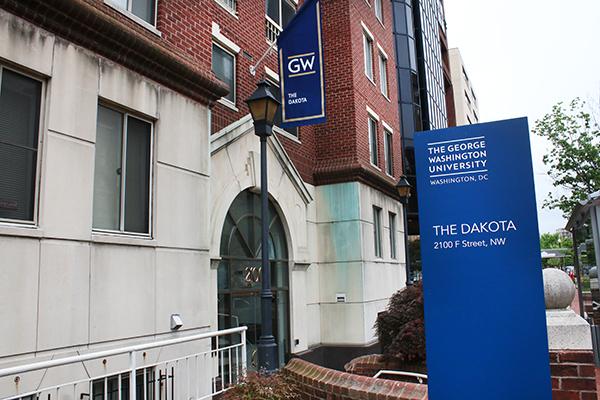
A large portion of the $4 million set aside for residence halls this summer will go toward renovating The Dakota for first time since the University bought the building in 1999.
The University will upgrade every kitchen and bathroom in the 200-bed hall, tearing out existing appliances and cabinets. GW will also rip out flooring that was ruined after massive flooding this year, refurbishing the building reminiscent of a once-regal hotel that is lined with old mirrors and faded beige walls.
Dean of Student Affairs Peter Konwerski said The Dakota will see the most notable upgrades of the three halls slated for renovations this summer, mostly because it virtually hasn’t been touched for the past 15 years.
“You will be coming into a very different building, lots of different infrastructure,” he said. “That’s actually one of the biggest renovations, and it’s because we want it to be up to the standards our students expect.”
GW Housing Programs Director Seth Weinshel declined to say how much of the $4 million will specifically pay for work in The Dakota.
Weinshel said the repairs are in line with GW’s plan to renovate its more than two dozen halls every seven years. Workers will also gut kitchens in International House and replace carpeting and wallpaper in City Hall.
He said his office prioritized the buildings based on feedback from the Residence Hall Association and Student Association, “as well as by balancing the overall size and scope of the projects.”
The renovations come three months after students reported massive flooding on the first, second and third floors of The Dakota because of backed-up water pipes. They said pools of water were “high enough to fill a shoe.”
Though Konwerski said the hall is in need of upgrades, students have come to favor The Dakota because it offers some of the only triples on campus. The quads and triples have two separate bedrooms and two bathrooms, while sophomore housing options like Munson or JBKO halls, offer one bathroom and one shared bedroom.
The rooms were also some of the most expensive options offered to affinity groups last year. This fall, when upperclassmen move in, they will pay $12,760 for a two-bedroom, four-person suite.
The 2100 F St. building was first built as an apartment complex in 1989, according to the GW and Foggy Bottom historical encyclopedia.
It used to be one of the only buildings on campus to offer in-room washing and drying machines, but both were phased out after one caught fire, causing $340,000 in damages and displacing 52 students for more than a week. Now just two of GW’s most expensive upperclassmen halls, 1957 E Street and South Hall, offer the amenity.
RHA president Ari Massefski said this summer’s renovations signal that administrators can be response to student requests.
“I think that’s major because it’s just the University saying it’s a commitment, it’s something that’s important to us, this is something that we’re going to follow through on,” he said.
Massefski said in addition to collecting information about the soon-to-be-renovated residence halls, the group will also continue conducting surveys as early as this fall to keep up to date on student satisfaction with residence halls.








